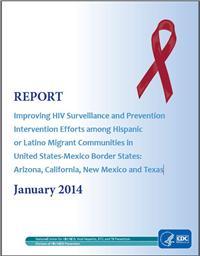Visit Website:
This report is a literature review of existing models, practices, and HIV prevention interventions for Hispanic or Latino migrant communities so that HIV prevention strategies along the southern border states can be updated and implemented. The five most important areas of intervention improvement were noted: 1) Identify the specific structural, environmental, cultural, and sexual contexts along the United States-Mexico border region that facilitate HIV risk behaviors among migrants, 2) Identify the most efficacious and cost-effective HIV prevention strategies for the considerable diversity among migrants, especially those at highest risk, such as gay and bisexual men, injection drug users, and migrants of varying socioeconomic and educational backgrounds and transnational experiences, 3) Implement and evaluate HIV prevention interventions that are culturally and linguistically appropriate, 4) Enhance collaboration with and between health care providers, and 5) Identify points in the HIV care continuum to focus prevention efforts that will achieve the greatest impact in reducing new HIV infections among Hispanic or Latino migrant populations in border states.
Format:
Report
Publication Date:
2014
ID:
35632
- Hispanic or Latino persons
- Non-U.S.-born persons
- HIV and AIDS
- HIV and AIDS Prevention


